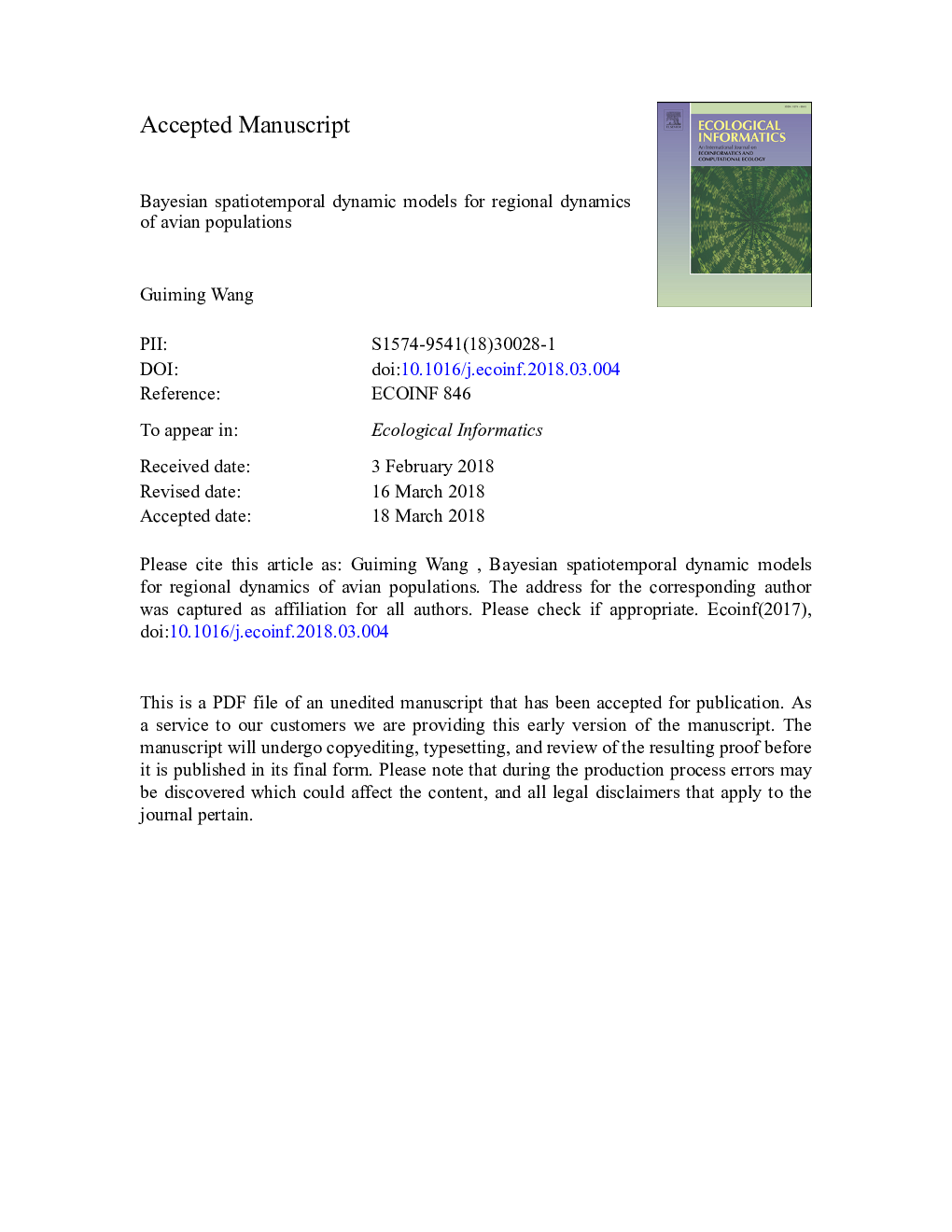| کد مقاله | کد نشریه | سال انتشار | مقاله انگلیسی | نسخه تمام متن |
|---|---|---|---|---|
| 8845830 | 1617189 | 2018 | 33 صفحه PDF | دانلود رایگان |
عنوان انگلیسی مقاله ISI
Bayesian spatiotemporal dynamic models for regional dynamics of avian populations
ترجمه فارسی عنوان
مدل پویای فضایی بینایی بیزی برای پویش منطقه ای جمعیت های پرندگان
دانلود مقاله + سفارش ترجمه
دانلود مقاله ISI انگلیسی
رایگان برای ایرانیان
کلمات کلیدی
INLAThreshold responseSPDENLCDWMAGMRFCPUEAICcLULCDICLand use and land cover - استفاده از زمین و پوشش زمینMoran effect - تأثیر مورانBayesian hierarchical model - مدل سلسله مراتبی بیزیdeviance information criterion - معیار انحراف اطلاعاتPrism - منشورGaussian random field - میدان تصادم گاوسیGaussian Markov random field - میدان تصادم گاوسی مارکوفSpatial synchrony - هماهنگی فضاییIntegrated nested Laplace approximation - یکپارچه تقسیم لاپلاس ناساز
موضوعات مرتبط
علوم زیستی و بیوفناوری
علوم کشاورزی و بیولوژیک
بوم شناسی، تکامل، رفتار و سامانه شناسی
چکیده انگلیسی
The spatiotemporal dynamics of multiple animal populations may exhibit the hierarchical dynamic patterns including regional common trends or spatial synchrony and local variability. Environmental drivers such as climatic variability, operating on large spatial scales, have been proposed to be a driver of the spatial synchrony of avian and mammalian populations (i.e., the Moran effect). On the other hand, demographic responses to heterogeneous, local environments may result in substantial local population variability (i.e., variance across multiple populations). This study used the Bayesian hierarchical spatiotemporal dynamic model to determine the spatiotemporal dynamic patterns of 27 eastern wild turkey (Meleagris gallopavo silvestris) populations scattered across Mississippi, USA, from 1994 to 2005. The regional effects of seasonal climate and relative amount of forest in habitats were also evaluated to test the Moran effect. Twenty seven wild turkey populations had a spatial synchrony with the strength and spatial scale similar to those of other avian populations in North America. Warming spring or spring-autumn climate appeared to reduce wild turkey relative abundance; however, winter climate did not influence the dynamics of wild turkey populations in Mississippi. Average proportion of forest affected the average relative abundance of wild turkeys in a nonlinear manner, with its positive effects switching to a lessened constant effect beyond the threshold of 60% forest cover. However, regional climatic variability was unlikely to synchronize wild turkey populations in Mississippi. This study proposed a hypothesis concerning regional habitat quality degradation, which may cause regional population declines and synchronize the dynamics of animal populations.
ناشر
Database: Elsevier - ScienceDirect (ساینس دایرکت)
Journal: Ecological Informatics - Volume 45, May 2018, Pages 31-37
Journal: Ecological Informatics - Volume 45, May 2018, Pages 31-37
نویسندگان
Guiming Wang,
